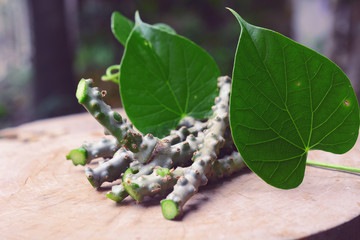Introduction: Understanding Eye Flu and Pink Eye
Eye infections are common and can cause discomfort and irritation. One such infection is eye flu, also known as conjunctivitis or pink eye. In this article, we’ll explore effective ways to quickly cure eye flu and provide tips to prevent pink eye infections. Whether you’re dealing with eye flu yourself or want to safeguard your family, these insights can help you manage and prevent these uncomfortable infections.
Curing Eye Flu at Home: Quick and Natural Remedies
Eye flu can be bothersome, but there are several home remedies that can provide relief and speed up the healing process:
- Warm Compresses: Applying a warm compress to your closed eyelids can help alleviate discomfort and reduce inflammation. This method can also help in reducing the itchiness and redness associated with eye flu.
- Tea Bags: Tea bags, particularly chamomile or green tea, contain soothing properties. Place a cooled, moist tea bag over your closed eyes for a few minutes to experience relief.
- Honey: Honey has antibacterial properties that can assist in fighting eye infections. Mix a small amount of honey with warm water and use a clean cloth to apply it gently to the affected eye.
- Aloe Vera Gel: Aloe vera has anti-inflammatory properties that can soothe irritated eyes. Apply a small amount of pure aloe vera gel to the affected area for relief.
Curing Eye Infections in 24 Hours: Actionable Steps
While curing eye flu in 24 hours may not always be possible, these steps can help expedite the healing process:
- Avoid Touching: Touching your eyes with dirty hands can worsen the infection. Always wash your hands thoroughly before touching your face.
- Hygiene: Change your pillowcases, towels, and washcloths frequently to prevent the spread of infection. Use disposable tissues and avoid sharing personal items.
- Stay Hydrated: Drinking plenty of water can help flush out toxins and promote overall eye health.
- Over-the-Counter Eye Drops: Non-prescription lubricating eye drops can provide relief from dryness and discomfort. Consult a healthcare professional before using any medication.
Special Considerations for Toddlers: Gentle Care for Quick Recovery
When dealing with eye flu in toddlers, extra care is needed:
- Consult a Pediatrician: If your toddler shows symptoms of pink eye, consult a pediatrician for proper diagnosis and guidance.
- Keep it Clean: Gently clean the toddler’s eyes with a damp, clean cloth. Avoid using harsh chemicals or irritants.
- Frequent Handwashing: Encourage your toddler to wash their hands regularly, and ensure they don’t touch their eyes with dirty hands.
Natural Approaches for Pink Eye Relief Without Eye Drops
For those looking for alternatives to eye drops, consider these natural approaches:
- Cold Milk: Soak a cotton ball in cold milk and apply it gently to closed eyelids for a soothing effect.
- Cucumber Slices: Place chilled cucumber slices over your eyes to reduce redness and swelling.
- Potato Poultice: Grate a potato and place it in a clean cloth. Apply the poultice over your closed eyes for relief.
Preventing Pink Eye: Early Symptoms and Effective Measures
Prevention is key to avoiding pink eye infections. Recognizing the early symptoms can help you take action promptly:
- Watery or Itchy Eyes: These are often early signs of pink eye. Avoid touching your eyes and wash your hands frequently.
- Redness and Swelling: If you notice redness and swelling, take steps to prevent the spread of infection.
- Avoid Sharing Items: Personal items like towels, makeup, and eye drops should not be shared, especially if someone has a pink eye infection.
Choosing the Right Eye Drops: Aiding Recovery
In cases where eye drops are necessary, it’s important to choose the right ones:
- Consult a Professional: Seek advice from a healthcare professional to determine the appropriate eye drops for your condition.
- Preservative-Free Drops: If you’re using eye drops frequently, opt for preservative-free versions to minimize irritation.
- Artificial Tears: Lubricating eye drops can provide relief from dryness and discomfort.
Common Misdiagnoses: Conditions Mistaken for Pink Eye
Pink eye symptoms can sometimes be confused with other conditions, such as:
- Allergies: Seasonal allergies can cause redness and itchiness in the eyes, similar to pink eye symptoms.
- Bacterial Infections: Some bacterial infections may mimic pink eye symptoms. Consulting a healthcare professional is crucial for accurate diagnosis.
Conclusion: Empowering Yourself for Eye Health
Eye flu and pink eye infections can be uncomfortable, but with the right knowledge and proactive measures, you can effectively manage and prevent them. By following these tips and recognizing the early signs, you’ll be better equipped to care for your eyes and promote overall eye health.
Disclaimer: This article provides general information and is not a substitute for professional medical advice. Consult a healthcare professional for accurate diagnosis and personalized guidance.


